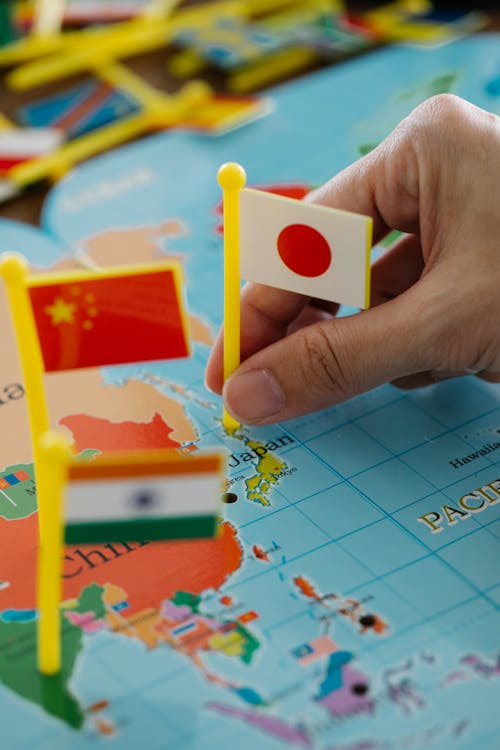 |
| Free to use photo,This photo by https://www.pexels.com |
USD/JPY Trading
The USD/JPY exchanging is the ticker for the US dollar to yen conversion scale in the UK Forex market. Because the well-known hero hails from Japan, this couple is commonly referred to as the Ninja. The USDJPY is the second most liquid currency pair in the Forex market, after the EUR-USD. It is a member of the majors group. The base currency of the USD/JPY pair is the US dollar, while the quote currency is the Japanese yen. At the point when, for example the cost of the USD/JPY is 110, it implies that one would require 110 Japanese yen to obtain 1 US dollar. The USDJPY trading pair has always been popular for forex online trading because it offers volatility all the time, especially during "weird" Asian hours, effectively creating a market that is open around the clock.
The history of USDJPY trading Despite the fact that the US dollar is currently the primary reserve currency of the world, the yen was making a serious case for that position in the 1980s. However, despite the fact that Japan's prolonged economic decline prevented the yen from realizing its "dream," the currency continues to dominate global trade and is the fourth largest reserve-held currency. Japan has forever been one of the world's biggest net exporters, with sends out contributing 40% to its Gross domestic product. The Japanese government is well-known for intervening in currency markets to control product prices on international markets because of its reliance on exports. Nevertheless, the Japanese yen has remained Asia's most liquid currency and is frequently used as a proxy for the expansion of the Asian economy as a whole.
Trading USD/JPY: Highs and Lows The Ninja is a common currency pair because of Japanese government intervention in the markets. The pair has historically stayed within the 76-146 price range. The range has recently been more concentrated between 85 and 130. However, during the global financial crisis, the pair reached all-time highs of 306.84 in December 1985 and all-time lows of 75.74 in October 2011.
Significant Bodies Affecting the USDJPY Pair
The significant body affecting the USD JPY exchanging is the Bank of Japan (BoJ), infamous for various market mediations. Monthly interest rate announcements from the BoJ are accompanied by rate statements that provide UK investors and traders with insight into the direction of future policy. Additionally, the USD/JPY rate can be significantly impacted by important data that is periodically released by the Japan Statistics Bureau. Data like GDP, Trade Balance, and Current Account almost always cause a lot of volatility in the USD to JPY due to Japan's export-driven economy.
The USD/Yen exchange rate will also be affected by the US Federal Reserve, whose major monetary policy decisions have the potential to establish long-term trends. The US Federal Reserve announces interest rates eight times per year. Japan is a tremor inclined country, and thusly, the Japan Meteorological Office is a significant body that can impact USD JPY exchanging costs. The USD/JPY rate can be affected by severe earthquake warnings from the Earthquake Early Warning (EEW) system. This can put pressure on the Japanese yen. You can undoubtedly ascertain the result of any exchanging position by utilizing our forex number cruncher or use EA exchanging bots to computerize your exchanges.
USDJPY Exchanging Relationship
The USD-JPY has consistently shown an incredible relationship with raw petroleum exchanging. This makes sense because Japan is one of the largest importers of the commodity and is one of the countries in the world that is the most industrialized. The Japanese yen typically appreciates in tandem with an increase in oil prices. As a result, oil has a positive USD-JPY correlation. Typically, the pair will rise when oil prices rise and fall when oil prices fall. Even though this correlation exists, before trading the USDJPY trading pair online, it is essential to conduct thorough market analysis.
FAQ: USD/JPY: Why is the USD/JPY so significant?
Because of its widespread popularity, the USD/JPY pair is one of the currency markets' most traded pairs. The Yen is the third most traded currency, and the United States dollar is the most isolated currency. Japan has a significant export economy, particularly in the electronics and auto sectors, and the pairing between the two is a significant indicator of trade between Asian markets and the United States. Historically, traders held this pairing solely for the purpose of collecting the interest differential between the two currencies in the carry trade.
How would I exchange the USD/JPY?
While it is feasible to exchange the USD/JPY matching straightforwardly through the forex markets, it is additionally conceivable to exchange it by means of agreements for contrast (CFDs) and guess on cost changes in like that. A client and broker enter into a CFD agreement in which one party agrees to pay the other the price difference between the beginning and end of the trade. The ability to use greater leverage when trading forex pairings with a CFD is one of its advantages.
When is the USD/JPY trading at its best?
Due to the significant time difference between New York and Tokyo, the USD/JPY pair is a fascinating option for trading. If you want to day trade this pairing, you need to know when the market is most liquid because otherwise the pair tends to just drift without changing much in value. It's absolutely impossible to create gains from that kind of quelled cost activity. Based on past experience, the best time to trade this pair is between 12:00 and 15:00 GMT. That is the point at which the pair sees the best liquidity and unpredictability.